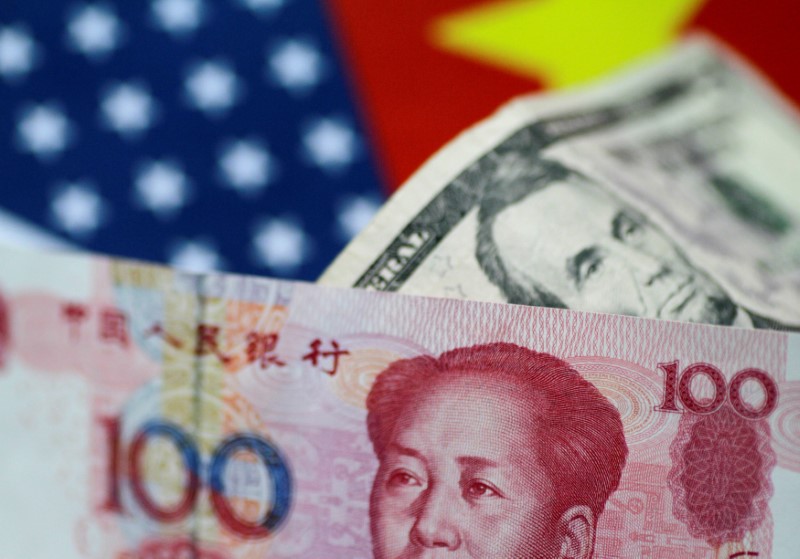Investing.com — Most Asian currencies moved little on Thursday and the dollar scaled seven-week peaks on optimism over raising the U.S. debt limit and in anticipation of more cues on monetary policy.
The Chinese yuan was a key outlier, hitting its lowest level in over five months amid growing concerns over a slowing economic recovery in the country.
The fell 0.1%, crossing the psychologically-important 7 level against the dollar for the first time since early-December. A breach of the 7 level, which is closely watched by the government and traders, usually heralds more losses in the Chinese currency.
A string of weaker-than-expected economic readings for April pointed to a slowing recovery in the country, despite the lifting of anti-COVID measures earlier in the year. Markets also began speculating that the People’s Bank of China may further cut interest rates to support the economy, which bodes poorly for the yuan.
The , which had breached the 7 level earlier this week, fell 0.3%.
Broader Asian currencies moved in a flat-to-low range, coming under pressure from a stronger dollar as the Biden Administration said a deal on raising the debt limit could be struck as soon as this week.
The move abated fears over a U.S. debt default, and drove capital flows back into the dollar and Treasuries.
The rose 0.1% after steep overnight losses, while the and the moved less than 0.1% in either direction.
The yen took some support from data showing that Japan’s fell more than expected in April. But a drop in Japanese and pointed to more economic headwinds for the country, especially amid slowing demand in its key export markets.
The fell 0.2%, as pointed to lesser economic headroom for the Reserve Bank to keep raising interest rates.
The and were steady in Asian trade after rising to a seven-week high in overnight trade.
Markets are now awaiting a slew of Federal Reserve speakers this week, most notably on Friday, for more cues on monetary policy.
Fed officials presented a hawkish view on monetary policy earlier this week, with general consensus among policymakers remaining that inflation was still too high, and that the Fed could still raise interest rates further.
This went against market expectations that the Fed will pause rates in June, as . But with U.S. interest rates set to remain higher for longer, Asian currencies are likely to face increased pressure in the coming months.
Read the full article here













